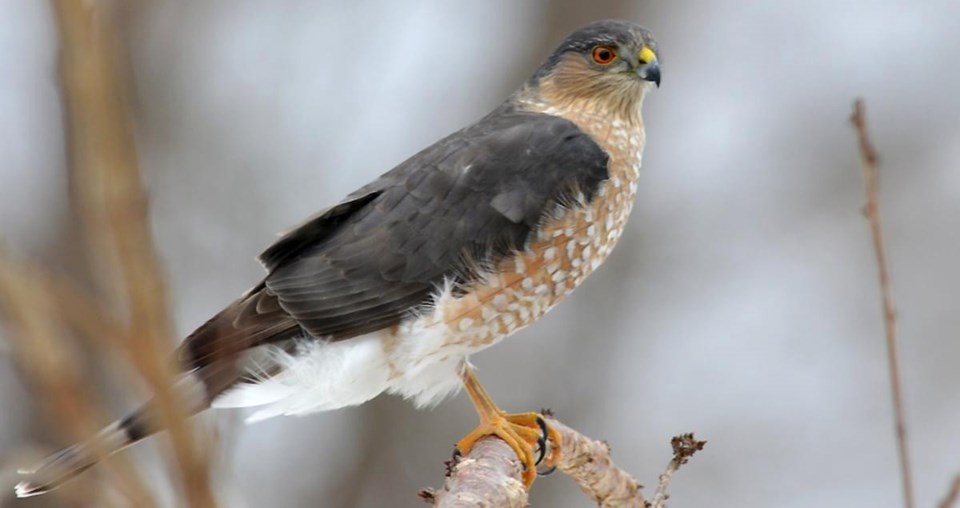The Sunshine Coast Natural History Society holds monthly bird walks/field trips for its members, and on Sunday, Sept. 15, a dozen members visited the local birding hotspots between Roberts Creek and Sechelt. Despite a poor forecast, the weather largely co-operated. Mid-September is an interesting time of the year for birders as a field trip will yield late summer visitors, fall migrants and early wintering species. And so it proved.
The first stop at the Roberts Creek jetty produced wintering waterbirds such as common loon, surf scoter and red-necked and western grebes. The migrant component was represented by spotted sandpiper and late summering birds by orange-crowned and yellow warblers.
The next stop was Mission Point where migrant northern pintails were observed flying south and an early wintering species, black scoter, was present. Thirty-six black oystercatchers, a common wintering species, were counted. At one point a bald eagle flew overhead and put every single bird (hundreds) to flight. As soon as the danger had passed, all the birds returned to their activities at the point, whether foraging or roosting. The rarest bird of the day, a mourning dove, was also recorded here. Mourning doves are an interior species common in the Okanagan but only a scarce migrant on the Coast.
The Sechelt Marsh was the next destination. The highlight here was watching a protracted interaction, about 15 minutes, between a sharp-shinned hawk, a flock of crows and two or three northern flickers. It appeared that the hawk had designs on the flickers but the crows made it their business to make life difficult for the hawk as there is no love lost between crows and hawks. As soon as the hawk perched, it was harassed by the noisy crows and it appeared to be an unsuccessful hunt by the hawk. The Marsh produced a series of late summer visitors, willow flycatcher, Swainson’s thrush, cedar waxwing and three species of warbler, that will no longer be with us in a few day’s time. Across the road from the Marsh the head of Porpoise Bay yielded northern pintails and green-winged teal and a late group of three least sandpipers. In total, 52 species of birds were recorded on this morning outing.
The Natural History Society begins its winter program of monthly speakers on Friday, Oct. 4. For details regarding the SCNHS, see their website at sites.google.com/site/scnaturalhistorysoc/home
To report your sightings or questions about birds, contact tony@whiskeyjacknaturetours.com



